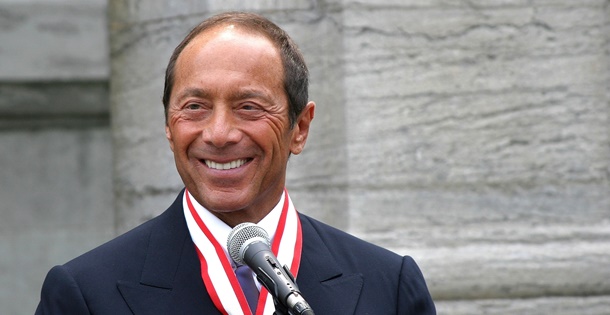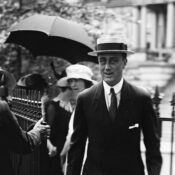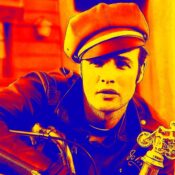Singer-songwriter Paul Anka remembers the first check he received after his recording of “Diana” soared to the top of the pop charts. The amount was $300, modest even by 1957 standards, but “it seemed like a lot of money to a kid coming off a paper route in Canada,” says Anka, who was 16 at the time. Unlike many one-hit wonders whose success was short-lived in the early days of rock and roll, Anka had the savvy and talent to stay ahead of the trends. The music he wrote soon evolved from sock-hop ballads like “Puppy Love” to big-band standards like “My Way,” created for his mentor and close pal Frank Sinatra.
“Frank and Sammy [Davis, Jr.] looked after me, watched over me, and allowed me into their circle,” he says of the legendary entertainers. The “circle” was Sinatra’s famed Rat Pack, and members included Dean Martin, Peter Lawford, and Joey Bishop. Sinatra gave them all nicknames, which were embroidered on the robes they wore when they lounged around the saunas and pools at the Las Vegas hotels where they performed. Anka, decades younger than the rest of the Pack, emerged as The Kid. The name stuck, although “as I got older and after I wrote ‘My Way,’ the mentoring thing became more of a friendship,” he says.
With an active concert schedule and a new CD in the works, Anka doesn’t dwell on nostalgia, although a couple of current projects have him rummaging through his files and pulling out photos, clippings, and programs from the past. If everything goes according to plan, 2009 is going to be a big year. His autobiography, still untitled, is scheduled for an autumn release, and he’s in preliminary talks about a Broadway show based on his 50-year career.
At age 67, The Kid is on a sentimental journey, recalling the times he traveled with Elvis, hung out with Buddy Holly, popped up on American Bandstand, and wrote a theme song for Johnny Carson. And then there was Ole Blue Eyes….
We’ll begin there.
The Post has uncovered an interesting photo of you, Frank Sinatra, and a monkey. Is there a story behind the picture?
Actually, it was an orangutan. We were in Vegas, and Frank’s friends were throwing a birthday party for him. I remember thinking, What do you give to a guy who has everything? So I went to the circus that was playing at a nearby hotel, and I said, ‘Let me borrow the orangutan.’ It was fitting because back then the atmosphere in Las Vegas was all about the prank. I marched into the party with the orangutan and gave it to Frank. Little did I know that in those days he was wearing a very bad toupee, and [in photos taken that night] the monkey’s hair looks better than Frank’s.
Of the more than 900 songs that you’ve created, “My Way” may be most memorable. What motivated you to write the words that became Sinatra’s signature signoff?
We were at a dinner in Florida when he announced his plan to retire. The Rat Pack had dissipated and he was tired. He said he would make one more album, and then he wanted out. That moved me to go home, imagine myself in his place, and write what would be the retiring song for someone who was the premier artist of all time. I used to do everything on the typewriter — I could type 60 to 65 words a minute — and so I just rattled away from one a.m. until I finished it around five. The song became a turning point for both of us. I remember I was in New York when he called me from the studio in Los Angeles and played it for me for the first time over the phone.
Let’s talk about the early days, the ’50s and ’60s, when you toured with some of the pioneers of rock and roll. What was it like to travel with these great artists — many of them African-American — at a time when some venues didn’t welcome people of color?
I remember that period in great detail. Coming from Canada, it was very difficult for me to understand segregation. I was close to the Platters, Chuck Berry, Fats Domino, and the others. Consequently, I was taken aback by it. We were close because of the music, but the situation drew us even closer. I remember refusing to eat at places that wouldn’t serve them. I was part of the team and we were very protective of each other. It was a time of great camaraderie.
How did your parents feel about their son going into show business at such a young age? Did they encourage you?
Things were different than they are now. A lot of parents today are sophisticated and start training their kids at age four or five because with shows like American Idol, they know what’s at the end of the rainbow. They understand the possibilities. But that wasn’t the case for us. Television started at five in the afternoon in Canada, and the programming was limited. People really didn’t have their arms around the music yet. My parents were dealing with the unknown — and a kid who was focused and aggressive about what he wanted. They were very concerned when I borrowed some money and went off to New York. Then I called them and said, “Come on down and sign my contract.” They were dazzled by it … and so was I.
You’re working on your autobiography now, piecing together five decades of history. What’s it like to go back in time and recall all that you’ve seen and done?
It’s been cathartic and sentimental. I’ve kept all my memorabilia…all the letters, articles, itineraries, and pictures. I have 50 years’ worth of material, so it’s really a process of editing out what I feel is not important or what I’m not willing to reveal. The memories come back, maybe not the details, but the meat is there when I look at the pictures and read the letters. I can remember what was going on and the people I was meeting.
And now there’s the possibility of a Broadway show…. Do you have a performer in mind to play Paul Anka as a teenager?
Yeah, I like the young kid who was on American Idol [David Archuleta], but there would have to be someone else. My real dream stroke is Robert Downey, Jr. His energy and capabilities are what I envision. That would be the coup of the century.
The music you’ve created over the decades is so varied that it can’t be tucked into a pigeonhole or given a label. How do you continue to stay up on the trends? When you’re in the car with the radio on, what do you like to listen to?
A lot of everything. There’s so much good stuff out there; my taste is eclectic. I listen to Madonna, Elton John, Yo-Yo Ma, Alicia Keys, Tim McGraw…. I have to be aware of what’s going on. I’m always learning something. I can’t come from a limited point of view of not embracing all music. I think that’s a mistake. Some artists are pretty highfalutin about what they do. That’s not me. I like country music a lot…I love the lyrics; I think country is the purest American music; that and jazz. As a musician I get a little something out of all of them.
Obviously you’re not thinking about retiring. Your last couple of albums did well, and you’re headed into the studio for another. Will it be classic Anka or new material?
I’m coming off of the success of Rock Swings [album released in 2005]. That went gold in many markets and gathered a new audience for me. I’m playing to 20,000 and 30,000 people in some cases, and 30 to 40 percent are under age 35. A lot of that is because of Rock Swings. I don’t know if I want to stay on that page, because I’ve done it. The next album may be newly written material from my observations at this stage of my life. My last album took me at least nine months to finish. You can’t rush something like that. Everything looks like it will happen in 2009.
Become a Saturday Evening Post member and enjoy unlimited access. Subscribe now




Comments
A delightful memory filled with pathos and charm. Believable and delightful.
After reading the feature article on Paul Anka that appeared in the January/February 2009 edition, I was compelled to share a memory that most likely might not appear in his upcoming autobiography. The article brought me back to the age of six when I appeared on the United Cerebral Palsy telethon. He was a regular host with Dennis James. My moment with Paul Anka:
I waved to mom in the audience as I sat in the big leather couch. Suddenly, the crowd began to clap with excitement; Paul Anka appeared with a microphone. He came and sat down and offered me a piece of gum. I began chewing and chewing, not realizing it was echoing over the speaker and the crowd roared with laughter. Then he asked me, “Do you know who I am? I raised my hand and said, “No.” However, I did tell him that he was cute and I think he even blushed as the audience began to chuckle. Then the lights were turned down and the spotlight was on Mr. Anka and me. He began to sing his famous hit “Diana” and replaced it with Valerie. At the end of the song, he kissed my forehead. So, there I was on national television being kissed by Paul Anka. I fell in love with him at the age of six. When I got home that night after the broadcast I wanted every Paul Anka record album and to my surprise mom and dad bought me his latest album.
Thank you, Saturday Evening Post for bringing back such wonderful memories. When I read the article, it was as if he was sitting next to me.
Valerie Pepe, Staten Island, NY